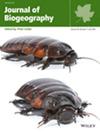Trophic Reorganisation of Animal Communities Under Climate Change
Abstract
Aim
This study employs a novel modelling approach to analyse and project global transformations in trophic structures driven by 21st-century climate change. The objective is to assess the impacts of these changes on trophic dynamics, providing insights to inform future research and biodiversity conservation strategies.
Location
A total of 14,520 terrestrial grid cells of 1° × 1° globally.
Time Period
The study uses 1990 as the baseline climate reference and projects current (2018) and future climate conditions for 2040, 2060, 2080 and 2100 under three Shared Socioeconomic Pathways (SSPs).
Major Taxa Studied
Trophic structures were assessed for 15,265 species, including 9993 non-marine birds and 5272 terrestrial mammals, across 9 predefined trophic guilds.
Methods
A spatially explicit community trophic structure model was implemented using the extreme gradient boosting algorithm (Xgboost). The model was trained using 1990 climatic data and a subset of 6610 continental cells partially or fully overlapping with protected areas. It was subsequently used to project current and future changes in trophic structures under three Shared Socioeconomic Pathways: SSP2-45, SSP3-70 and SSP5-85.
Results
The Xgboost model showed high predictive accuracy (86%, kappa = 0.91). Projections reveal extinction pressures concentrated in tropical and subtropical regions, disproportionately affecting specialised guilds such as frugivores and invertivores, while colonisation pressures predominantly occur in boreal, temperate and high-altitude regions, such as the Andes and the Himalayas, favouring invertivores, plant-invertivores and granivores. By the end of the century, significant trophic reorganisations are projected, potentially leading to a global homogenisation of trophic structures.
Main Conclusions
Climate change is driving significant transformations in trophic communities globally, with uneven effects across regions and trophic guilds. These reorganisations highlight the vulnerability of specialised guilds and the potential expansion of more generalist ones. Integrating community trophic structure models (CTSMs) into biodiversity conservation strategies is essential to complement species distribution models, providing a more comprehensive framework that integrates both trophic dynamics and the individual responses of species to their environment. This approach reinforces the importance of trophic biogeography as a key subdiscipline within biogeography, offering actionable insights for mitigating climate change impacts on biodiversity and guiding global conservation efforts.

 求助内容:
求助内容: 应助结果提醒方式:
应助结果提醒方式:


